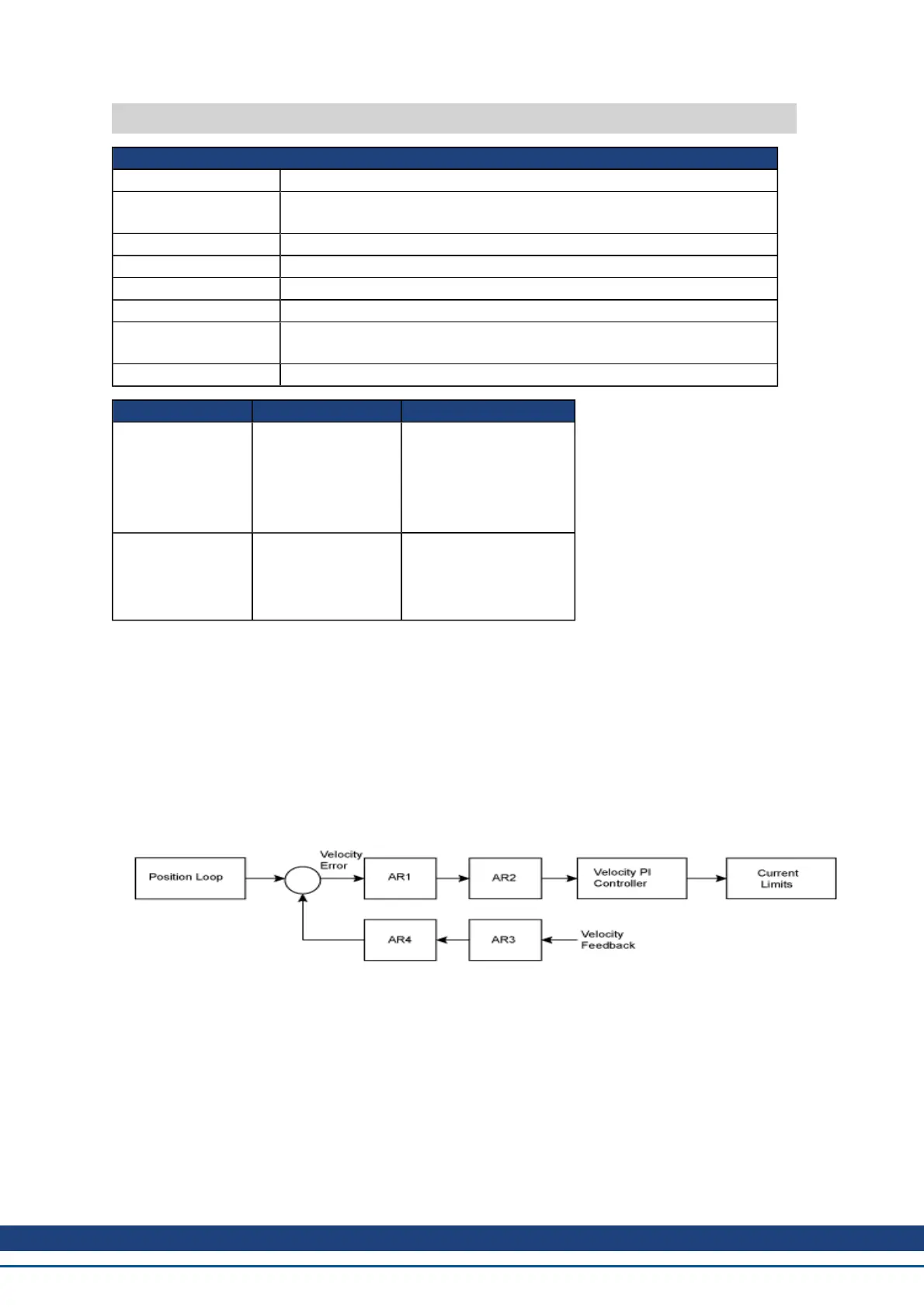VL.ARZQ1 TO VL.ARZQ4
General Information
Type R/W Parameter
Description
Sets the Q of the zero (numerator) of anti-resonance filter #1; active in
opmodes 1 (velocity) and 2 (position) only.
Units N/A
Range 0.1 to 5
Default Value 0.5
Data Type Float
See Also
VL.ARPF1 TO VL.ARPF4, VL.ARPQ1 TO VL.ARPQ4, VL.ARZF1 TO
VL.ARZF4
Start Version M_01-02-00-000
Fieldbus Index/Subindex Object Start Version
EtherCAT COE
and CANopen
3406h VL.ARZQ1
3406h/E VL.ARZQ2
3406h VL.ARZQ3
3406h/10 VL.ARZQ4
M_01-02-00-000
Modbus
832 VL.ARZQ1
834 VL.ARZQ2
836 VL.ARZQ3
838 VL.ARZQ4
M_01-03-00-000
Description
VL.ARZQ1 sets the Q (quality factor) of the zero (numerator) of AR filter 1. This value is Q
Z
in the approximate
transfer function of the filter:
AR1(s) = [s²/(2πF
Z
)²+s/(Q
Z
2πF
Z
) + 1]/ [s²/(2πF
P
)² +s/(Q
P
2πF
P
) + 1]
The following block diagram describes the AR filter function; note that AR1 and AR2 are in the forward path,
while AR3 and AR4 are applied to feedback:
AR1, AR2, AR3 and AR4 are used in velocity and position mode, but are disabled in torque mode.
Discrete time transfer function (applies to all AR filters)
The velocity loop compensation is actually implemented as a digital discrete time system function on the DSP.
The continuous time transfer function is converted to the discrete time domain by a backward Euler mapping:
s ≈ (1-z
-1
)/t, where t = 62.5 µs.
The poles are prewarped to F
P
and the zeros are prewarped to F
Z
.
Related Topics
AKD User Guide | VL Parameters
Kollmorgen | December 2010 627
